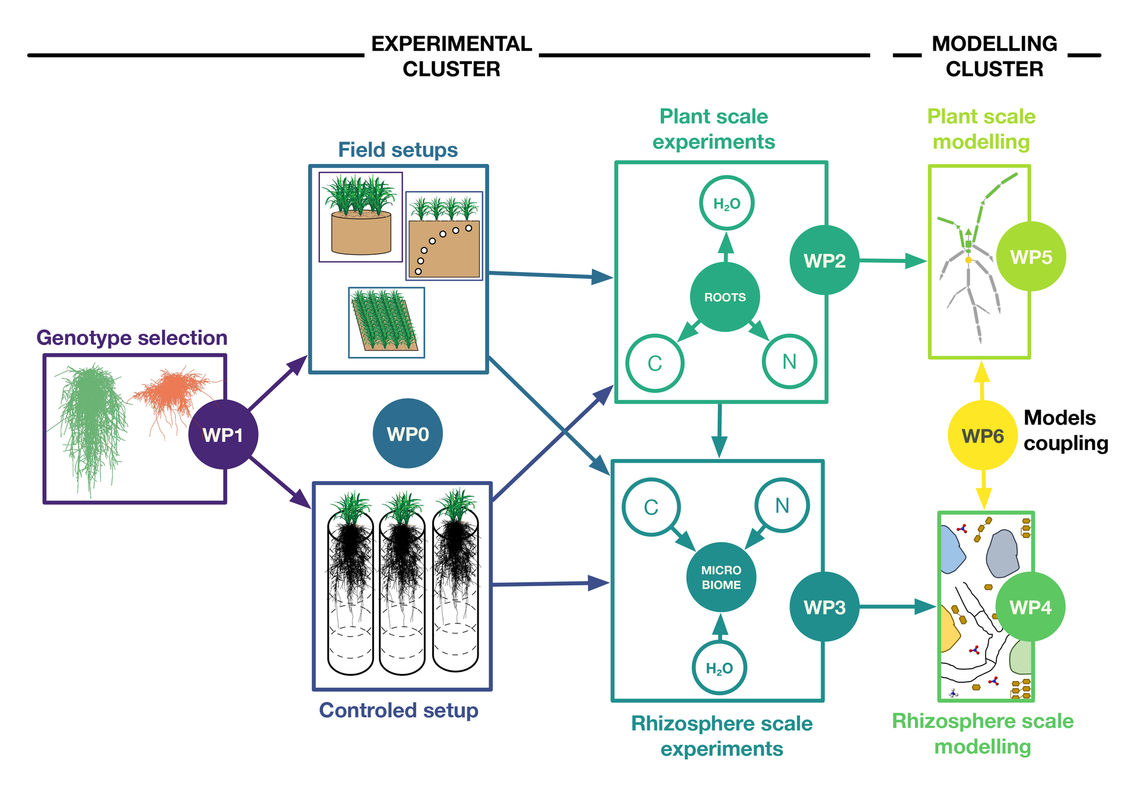crop wheat

CROP - Combining Root contrasted Phenotypes for more resilient agro-ecosystem
Project number: FKZ 031B0909A
Contact: Prof. Dr. Guillaume Lobet, Research Centre Jülich
Mail: g.lobet@fz-juelich.de
Project team: Research Centre Jülich, University of Hohenheim
Duration: 01/03/2020 - 01/03/2024
Website: www.crop-project.de
Project aim
The objective of our project is to demonstrate that combining plants with complementary root system architectures (different genotypes) within a single field creates a more resilient and durable agro-ecosystem against drought stress. We will focus on three main processes: water acquisition, fertilizer valorisation and microbial-root interactions. We will focus on the plant species winter wheat (Triticum aestivum) for its economical importance and its susceptibility to future climate modifications.
Motivation
Associations of plants species having contrasted root architecture can have beneficial impact on the overall crop productivity. However, combining multiple plants species into a single crop creates practical challenges as farming material needs to be adapted (or might not even exist). Another solution, is to combine genotypes of the same species with contrasted root system phenotypes. Here, we propose that combining deep and shallow root systems would provide multiple advantages in terms of crop resilience.
Expected results
At the end of the project, we will have built computational models combining microbial diversity with full plant development and function. The models will be assembled into a computational pipeline that will be used to assess the agronomical benefit of combining root phenotypes. The tools and analysis developed in the framework of the project will all be made freely available.
We will also show that the use of target root architecture traits that complement each other increase the resilience of the global crop. We will therefore create a new strategy for more resilient agricultural systems, that could lead to a decrease in fertilizer loss in aquifers and a better use of water resources.


